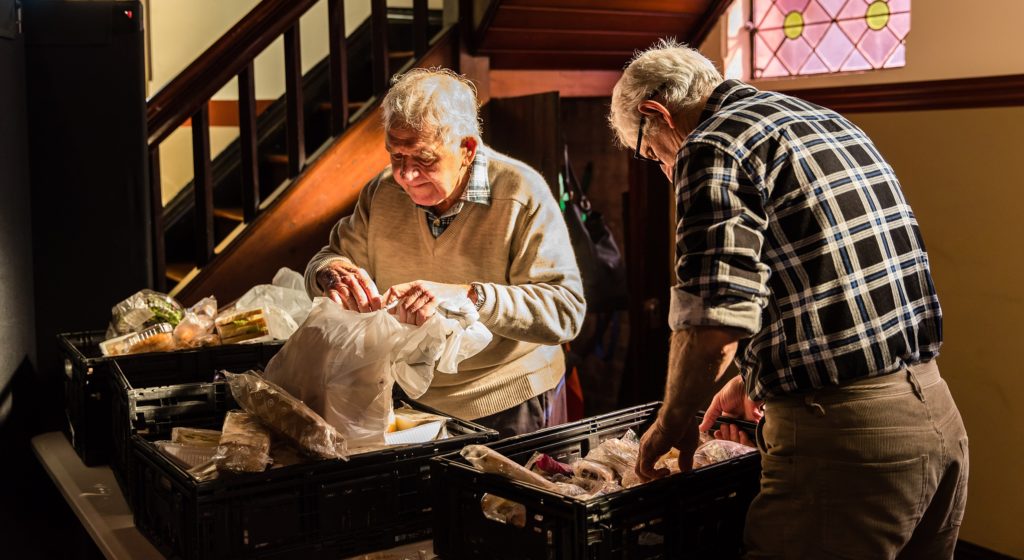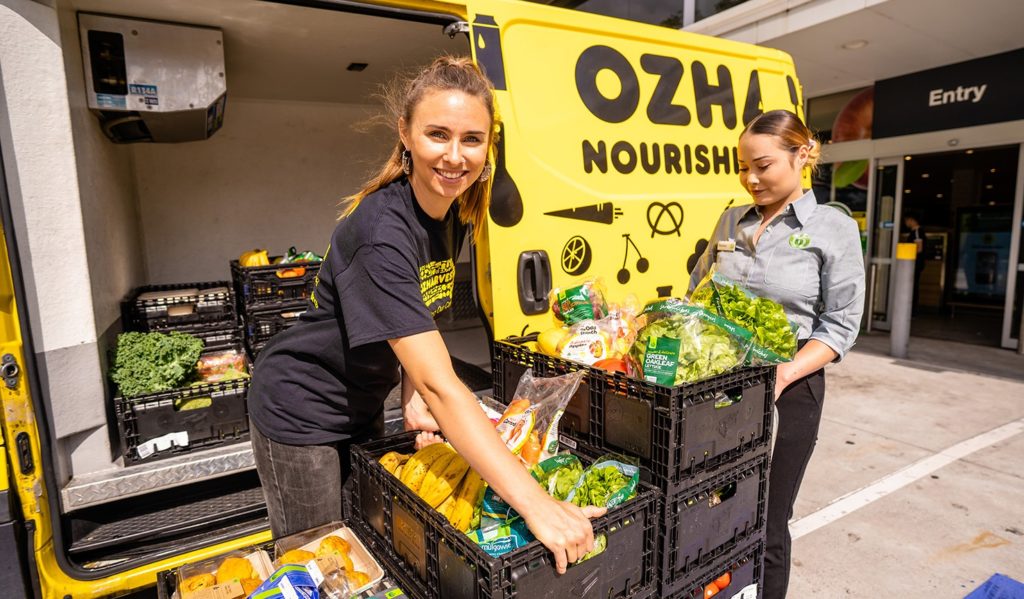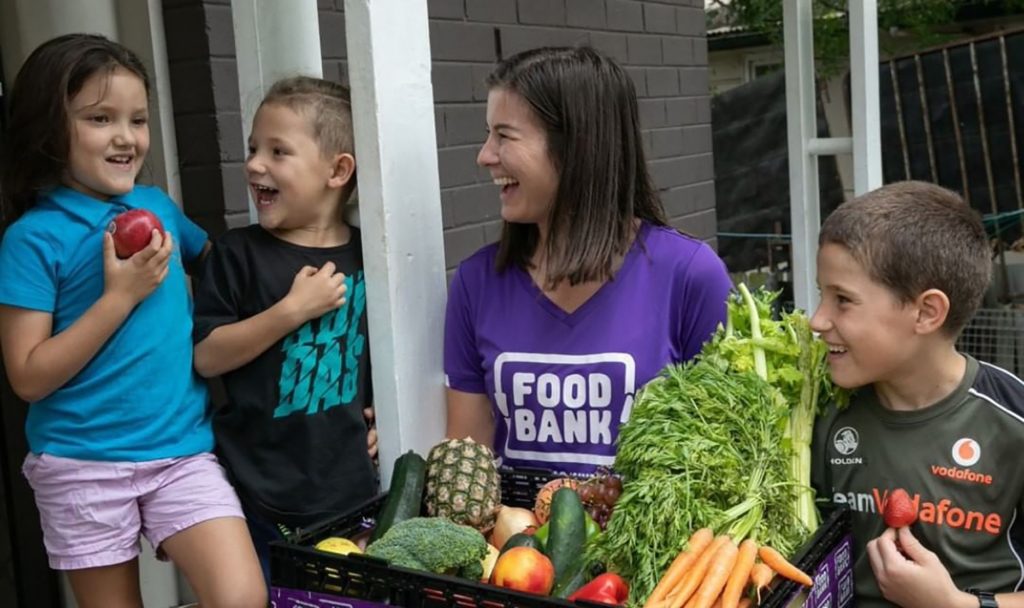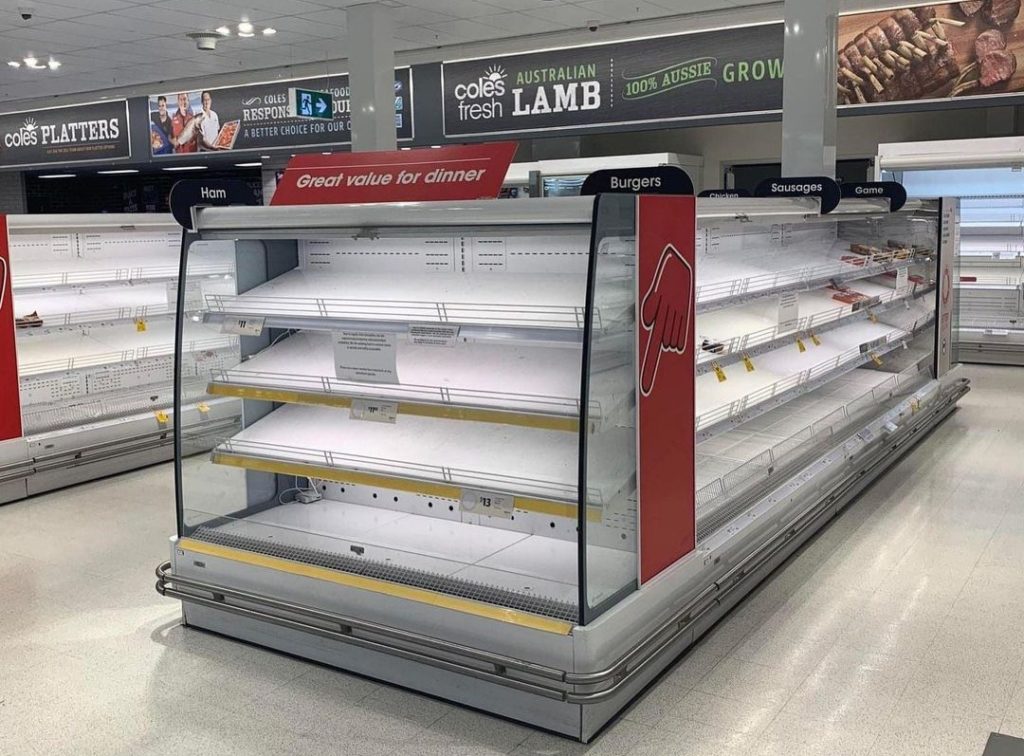Food relief faces fresh challenges
While lockdowns might be over and many of us are returning to some semblance of normalcy in our everyday lives, COVID’s long shadow still hangs over the great number of Australians whose livelihoods have been disrupted by the pandemic. According to the Foodbank Hunger Report 2021, in the past year, one in six adults haven’t had enough to eat and 1.2 million children have gone hungry. But while demand for food relief is soaring, the recent food shortages that have hit our major supermarkets and food retail outlets have left food rescue organisations like Foodbank and OzHarvest scrambling to source enough food for the thousands of charities they supply.
“Our core business is rescuing food from supermarkets, distribution centres and major events,” says Sarah Flomersfeld, OzHarvest NSW Operations Lead. “When supermarket shelves get bare, there’s a lot less for us to rescue.
“Like everyone, we thought, ‘Ah, January, that’ll be a time where we can just take a step back and refocus’. But COVID is the gift that keeps on giving. There were weeks in January where we were down 40 percent in the food we were able to rescue in Greater Sydney. Across the country, our ability to rescue food has dropped significantly. It seems to be getting better now. But we know COVID is not over this week. And the challenge for us is that a whole lot of charities and community organisations rely on the food we rescue.”

Stretched to the limit
OzHarvest supports 1800 charities across Australia; Foodbank supports 2950. These charities themselves are also struggling to maintain operations, with many volunteers and staff either in isolation, sick with the virus or more vulnerable to COVID and needing to step back from volunteering for their own health and safety. Some charities were forced to close temporarily, although many are now back up and running.
“But if they wake up on a Monday and half their staff is in isolation, often they won’t be able to open that week,” Flomersfeld says. “And that’s happening at very short notice. Or if they’re short-staffed, they might have to choose. Do they run their domestic violence services? Or do they run their food services? That’s a very difficult decision.”

A waiting game
Usually, OzHarvest doesn’t have to pay for the food it supplies, as it’s rescued from support partners such as supermarkets, food manufacturers and primary producers. But Flomersfeld says that in the past two years, that simply hasn’t been enough.
“Last year, we delivered more than 34 million meals across the country,” she says. “We couldn’t have provided those 34 million meals just on rescued food, because the demand was so great. But we’ve received some government funding, which we’re really grateful for. And that’s allowed us to purchase food as well.
“We also have wonderful relationships with supermarkets and primary producers. And they know they’re in this business to help people and also to reduce food waste. So they’re doing everything they can to give us all the food that’s left. For now, it’s just a matter of time. We just have to be patient and wait until the supply chains strengthen up.”

Food or rent?
Foodbank is also seeing incredibly strong demand for food relief. And what the Foodbank Hunger Report has revealed is the number of people who are new to food insecurity.
“One in three people who are struggling to meet their food needs are new to the situation,” says Foodbank CEO Brianna Casey. “They’ve never been food insecure before; they’ve never struggled to access food. So we’re dealing with a new cohort of people.”
Most of us probably know someone who’s lost a job, had their hours cut or has hit really tough times. When this occurs, food is quite often the first item to become discretionary in the household budget. Casey says Foodbank is now seeing this play out.
“While we had government assistance packages available to people throughout COVID, many of those packages are not available anymore,” she says. “So the reality is there are still many, many Australians who are incredibly reliant on food relief. In fact, we’re now assisting more than a million people a month across the Foodbank network.”

Supply routes cut
Further adding to the challenges these organisations face, recent severe flooding in South Australia cut off key road and rail supply routes in Central Australia. This has prevented food and groceries from being able to travel from South Australia to Alice Springs and Darwin, and west across to Perth and the rest of Western Australia
“For Foodbank, this hits us from two perspectives,” says Casey. “For one, it’s dramatically reducing our supply of essential food and grocery products in both our new Central Australia hub in Alice Springs and Foodbank Northern Territory in Darwin.
“But it’s also leading to significant increases in demand for food relief. What we’ve seen are supermarket shelves that are absolutely bare in Darwin and the Greater Darwin region. Unlike eastern seaboard cities where we might have a temporary shortage of some products, these are literally empty supermarkets. And when you’re vulnerable, for many people, it’s going to mean that you’re completely reliant on food relief.”

What can I do to help?
There are several ways that the average Australian can help to support food relief organisations. You can donate money, you can donate time or you can donate food.
“The best thing consumers can do to help Foodbank at the moment is to donate funds,” Casey says. “Every dollar donated to Foodbank creates two meals. It’s a really tangible and effective way for people to make a positive difference.”
Every dollar donated to OzHarvest also creates two meals. People can also volunteer to help pack emergency food relief hampers, rescue food, work with chefs in the kitchen or work with one of OzHarvest’s education programs. And this year, Flomersfeld says the organisation is also keen to work with more producers.
“Be they big or small, we’d love to work with more producers who have excess food,” she says. “We know producers hate seeing food going to waste. That’s happened a lot in the last year because of labour shortages. So we’d love to work with them to get food to charities.”

Not out of the woods yet
Even if you’re not in a position to donate funds, food or time, Casey says that there’s still one very easy way that consumers can help food relief organisations. Shop responsibly.
“When you go to the supermarket, buy what you need,” she says. “Don’t stockpile. Resist the urge to grab that last packet of pasta. Because when those shelves are empty, if you’re a vulnerable Australian who has a very finite budget, and you have once a week with a carer to come to a supermarket, the last thing you need is to get there and find the shelves bare.
“I think everyone in Australia has a responsibility, if we’re in a financial position to be buying groceries, to do it responsibly. And to continue to show kindness and generosity. We’ve seen some of the best of human behaviour over the last two years. We just need to see a lot more of it. Because unfortunately, we’re far from out of this challenging period.”
To find out more about how you can support Foodbank, head to foodbank.org.au. For more on how you can support OzHarvest, head to ozharvest.org









